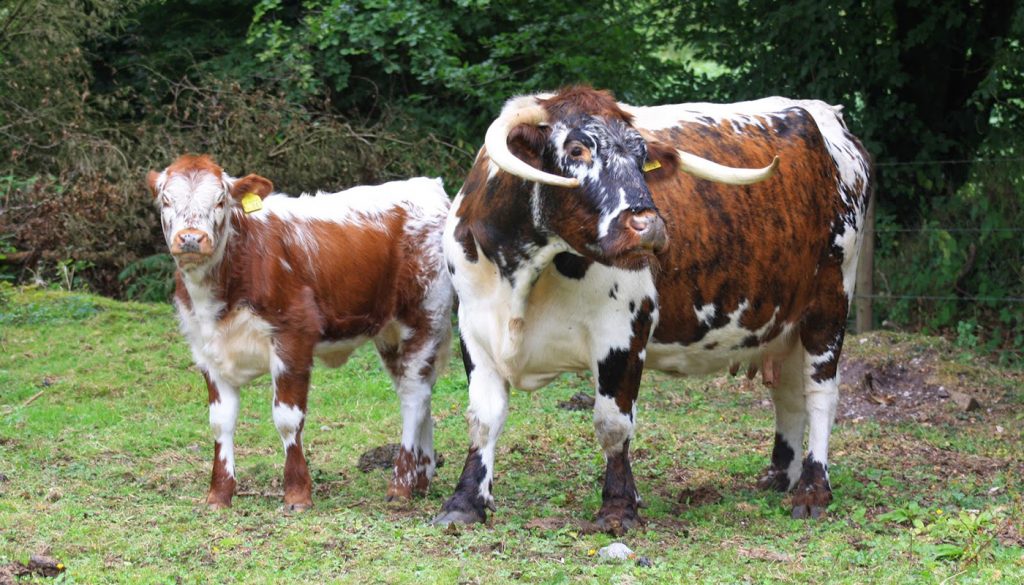
The English Longhorn have sweet alert looks and pretty faces with a fawn colored nose. They are not a very large cow breed and are of medium body structure with a soft coat of fur that has a white base and red markings that have a faded to dark appearance. They were originally raised as a tri-purpose breed for their meat, milk for cheese and butter and as draft oxen for the pulling of carts and plows.
ENGLISH LONGHORN BREED OF CATTLE QUICK PROFILE OVERVIEW
|
|
|---|---|
| They are a rare and gentle breed with long horns that curl downwards and towards their face | |
| Country of Origin: | England |
| Other Names: | Lancaster Longhorn or Longhorn Dishley, Lancashire Longhorn, Leicestershire or Warwickshire. |
| Main Purpose: | Meat |
| You may Also Like: | 35 Best Cattle Breeds for Milk – Dairy Cattle |
| You may Also Like: | 47 Best Cattle Breeds for Meat – Beef Cattle |
| Can be used for | Breed, Meat, Milk, Draft |
| Ideal Climate: | Heat, Cold, Most Climates |
| Conservation Status: |
Listed by the *ALC Status/Rarity: Rare – National Trust UK |
| Health Issues? | No known health issues |
| Good Starter Cattle? | Novice to intermediate Cattle farmer/keeper level |
| Cattle Associations: | Longhorn Cattle Society |
| Cattle Clubs: | Please refer to the Longhorn Cattle Society for more information on the English Longhorn cattle breed |
| Where to buy them? | >Please refer to the Longhorn Cattle Society for more information on the English Longhorn cattle breed |
| Child Friendly? | Livestock should not be left unattended around unsupervised children |
| General Information: | The English Longhorn is sometimes confused with that of the Texas Longhorn as they are both referred to as Longhorn. There are differences that distinguish the two breeds. The differences lie mainly in the shape of their horns. The English Longhorn, horns grow downwards and tend to curve towards their faces whilst the Texas Longhorn grow up and into a more lyre shaped horns. The English Longhorn cattle have a more standard coloring and patterning than that of the varied colors of the Texas Longhorn cattle breed. Although the breed is mostly used for the production of beef today, they were once used as draft oxen to pull plows and carts. They were also used for their milk and in the production of some English cheeses such as Red Leicester and Stilton cheese. The horns of the English Longhorn were used to make cutlery, lamps, buttons, and cups in the earlier ages. |
| Note: *ALC stands for American Livestock Conservancy | |
PHYSICAL CHARACTERISTICS |
||||||||||||||||||||||||||||||||
|---|---|---|---|---|---|---|---|---|---|---|---|---|---|---|---|---|---|---|---|---|---|---|---|---|---|---|---|---|---|---|---|---|
| The English Longhorn has a solid blocky body that is well muscled and covered with soft fur. They have short to medium sized legs in proportion to their well-defined bodies. They have pretty faces and a small to medium sized head with a small loose dewlap. | ||||||||||||||||||||||||||||||||
| Size: | Medium | |||||||||||||||||||||||||||||||
|
||||||||||||||||||||||||||||||||
COW BREEDING & MILKING INFORMATION |
|
|---|---|
| Most Cattle produce milk but not all of them are used in the dairy Cattle capacity for their milk. Cows only calve once a year and should have 12 to 14-month inter-calving cycle. They were once used for milking but mainly for the making of butter and cheeses such as the English Stilton and Red Leicester cheese. Today they are not milked, and their milk is only used for their calves. They are excellent mothers who exhibit good maternal instincts and will protect their young at all costs. At night the cows all form a circle around the young. They have easy births with little to no birthing problems and produce to well into the advanced years. They produce robust, vigorous calves that are ready to suckle. | |
| Breeding Period/cycle: | Usually lasts 6 to 24 hours Most ave. 12 to 16 hours Cows usually come on heat every 21 days. |
| Estrous cycle: | Ave. 17 days to 24 days Heifer – usually ave. 20 days Cows – usually ave. 21 days |
| Gestation Period: | Usually, around 279 to 287 days but most gestation is 283 days. Cows that are carrying bull calf’s their gestation period is usually a little longer than cows that are carrying heifer calves. |
| No. Calves/Litter: | 1 calf at a time. Cows rarely have twins or triplets, but it can happen |
| Lactation Period: | Cows lactation period can last for up to about 10 months (305) days. |
| Milking From: | 1 to 6 weeks after Calving |
| Drying off Period: | The cow should have a 12 to 14-month inter-calving cycle. Drying off period for around 60 days before she can calve again. |
| Milk Quality: | Good |
| Milk Ideal for: | Calves, cheese, and butter |
| You may Also Like: | 35 Best Cattle Breeds for Milk – Dairy Cattle |
CATTLE MEAT PRODUCTION INFORMATION |
||||||||
|---|---|---|---|---|---|---|---|---|
| Even though they are quite a rare breed today there are still breeders who sell their beef which is of exceptionally good quality. They have good carcass yields and dress out percentages. Their meat has good marbling and is tenders, tasty and juicy with minimal waste. They do not have much excess external fat as the breed has a soft warm coat to keep it warm rather than fat. They produce a superior quality of lean beef that more than meets the needs and demands of today’s consumer marketplace. | ||||||||
| Meat Production? | Yes, Quality: Excellent/Superior quality | |||||||
|
||||||||
| You may Also Like: | 47 Best Cattle Breeds for Meat – Beef Cattle | |||||||
CATTLE SKIN PRODUCTION INFORMATION |
||||||||
|---|---|---|---|---|---|---|---|---|
| Most meat Cattle will have a skin by-product, and these are usually used in some form or just as a hide. They are not specifically bred for their skin, but their hides make for good leather product and are a by-product of their meat production. | ||||||||
| Skin Production? | No, Quality: Good | |||||||
| Skin is used to Produce: | Calf/cow skin leather products such as shoes, car seats, fine leather coats, gloves, handbags, belts, furniture, rugs, etc. | |||||||
|
||||||||
HISTORY
The breed originated in England and the was the product of a project driven by Robert Bakewell who was a revolutionary in the field of interbreeding during his time.
He wanted to create a breed that would be economical to maintain and be able to provide meat for the masses who worked in town during the Industrial Revolution.
He crossbred long horned heifers with a Westmorland cattle breed bull and created the Dishley Longhorn which is called the English Longhorn today. Then through careful selection, he improved on the new breeds size and quality. The breed sparked a lot of interest and soon became widespread throughout England and Ireland.
In the 1800s the Shorthorn breed sprang into popularity and soon surpassed the English Longhorns popularity. The English Longhorn’s number went into decline for nearly 200 years and by the 1950s into the 1960s became a rare breed.
Thanks to the efforts of the Rare Breed Survival Trust in 1980 and an increased interest in extensively lean grass-fed cattle the breed has made quite a significant comeback.
Video
USEFUL LINKS
- Purebred Dairy Cattle Association
- American Dairy Association
- National Association of Animal Breeders
- American Dairy Science Association
- United States Cattlemen’s Association
- National Cattlemen’s Beef Association
- American National Cattlewomen
- Beef Cattle Breed Associations
- National Cattlemen’s Beef Association
- Fur Commission USA
- North American Meat Institute
- American Livestock Conservancy
- Animal Shelter (ASPCA)
- American Veterinary Medical Association
- American Animal Welfare Society
- American Animal Control
- American Society of Animal Science
- United States Department of Agriculture
 Beefmaster Cattle Breed – Everything You Need to Know
Beefmaster Cattle Breed – Everything You Need to Know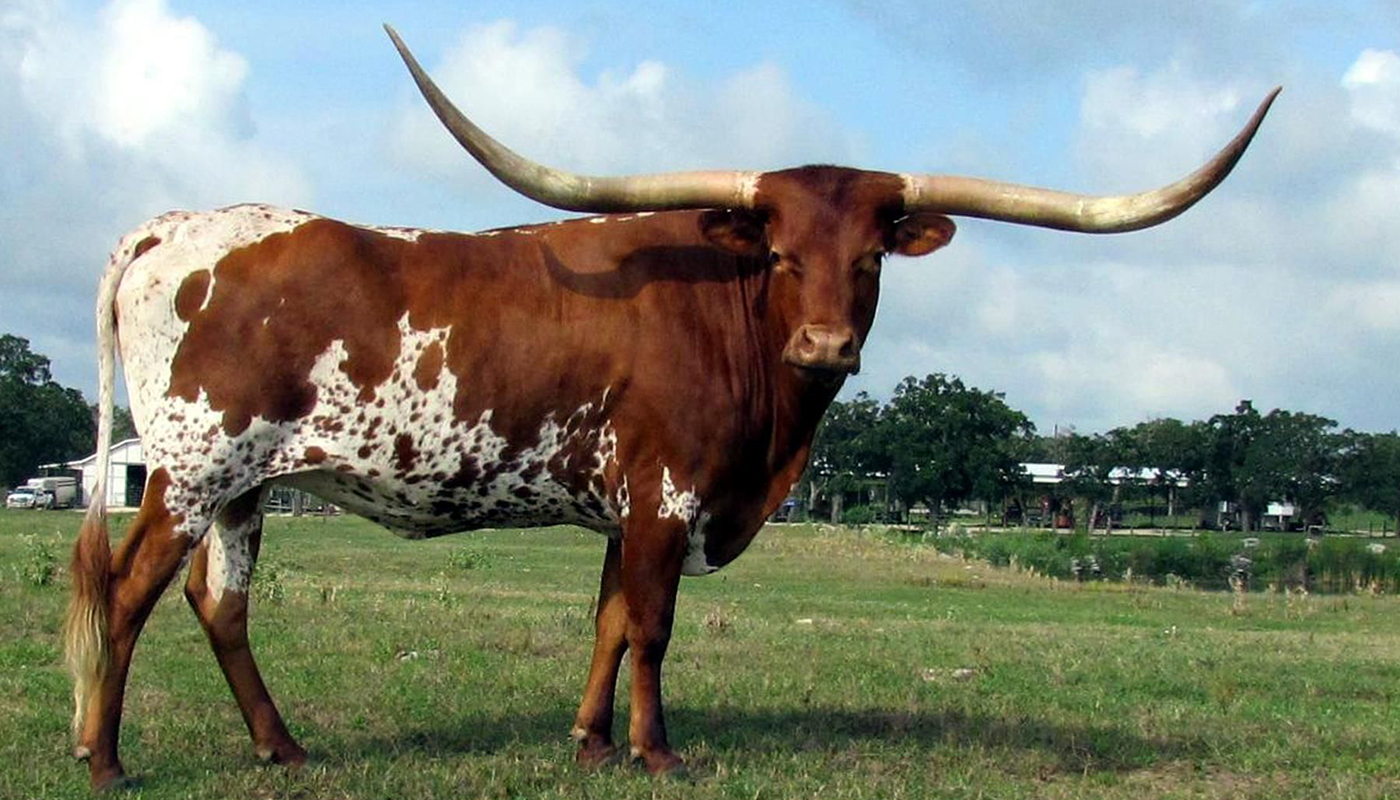 Texas Longhorn Cattle Breed – Everything You Need to Know
Texas Longhorn Cattle Breed – Everything You Need to Know Shorthorn Cattle Breed – Everything You Need to Know
Shorthorn Cattle Breed – Everything You Need to Know Guernsey Cattle Breed – Everything You Need to Know
Guernsey Cattle Breed – Everything You Need to Know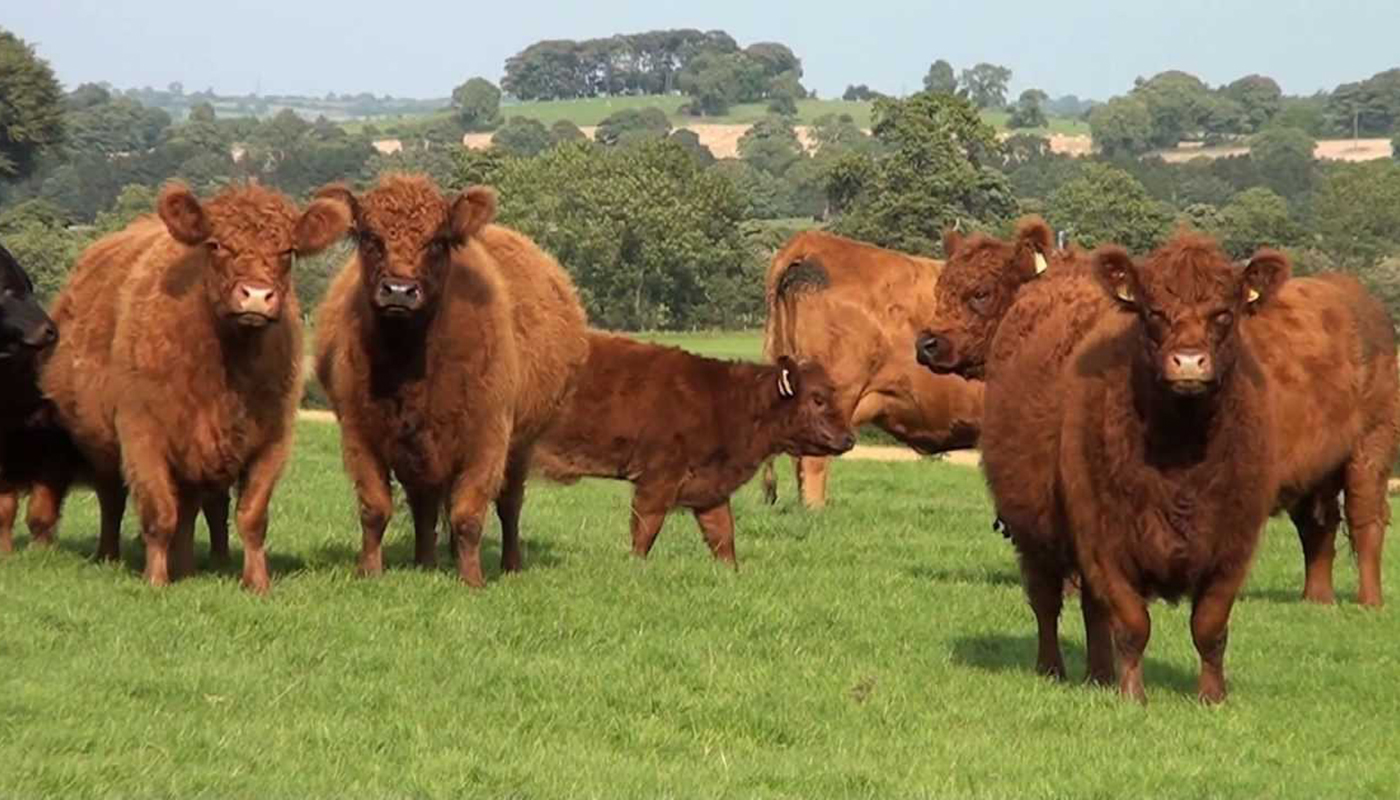 Galloway Cattle Breed – Everything You Need to Know
Galloway Cattle Breed – Everything You Need to Know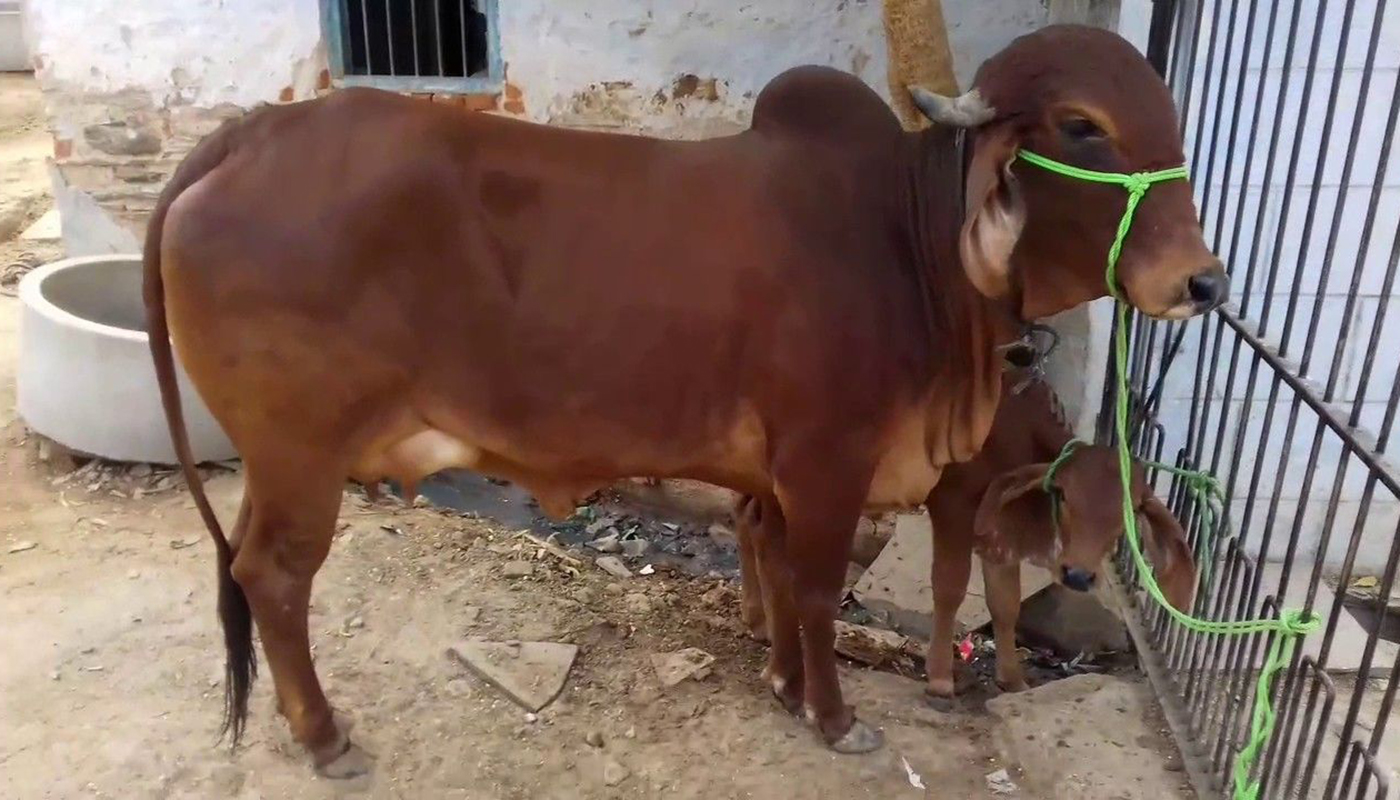 Gir Cattle Breed – Everything You Need to Know
Gir Cattle Breed – Everything You Need to Know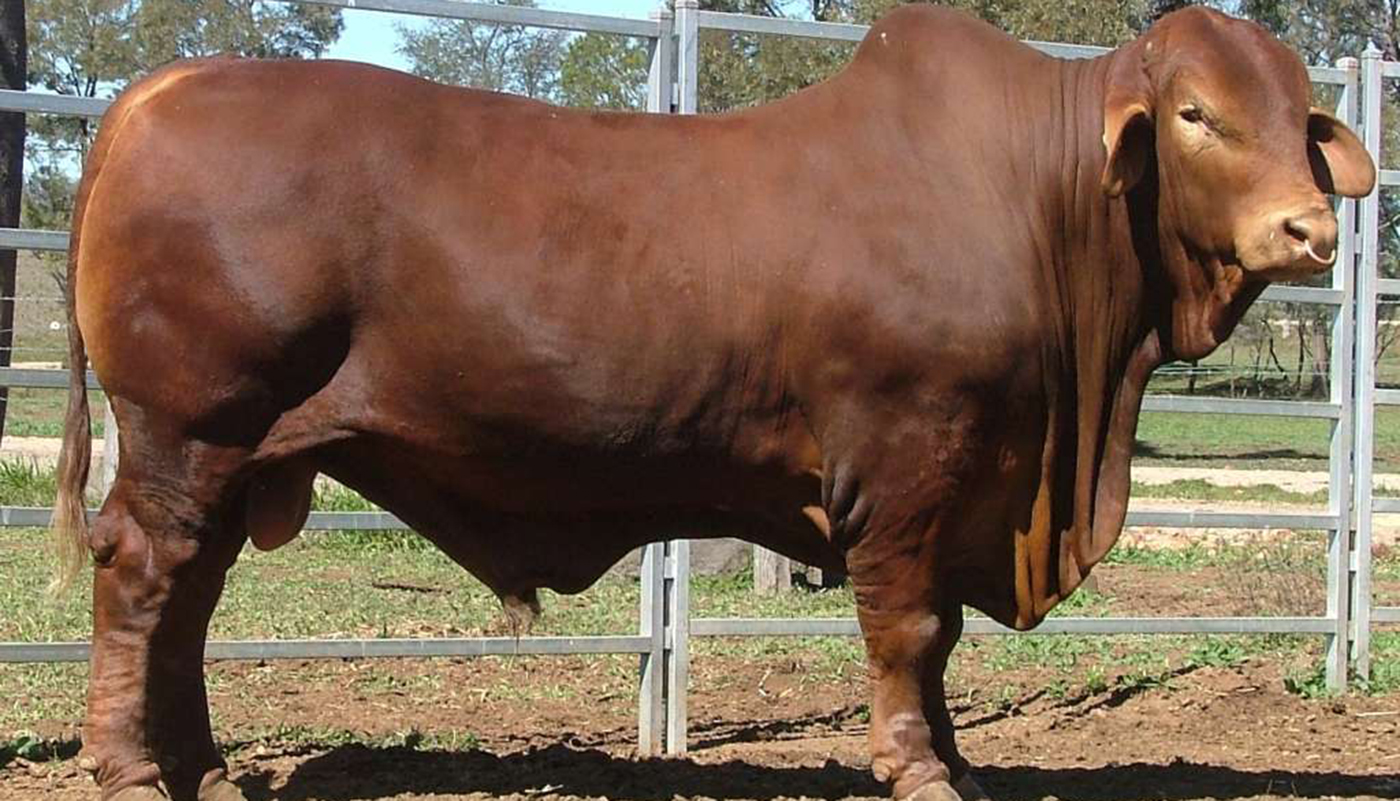 Droughtmaster Cattle Breed – Everything You Need to Know
Droughtmaster Cattle Breed – Everything You Need to Know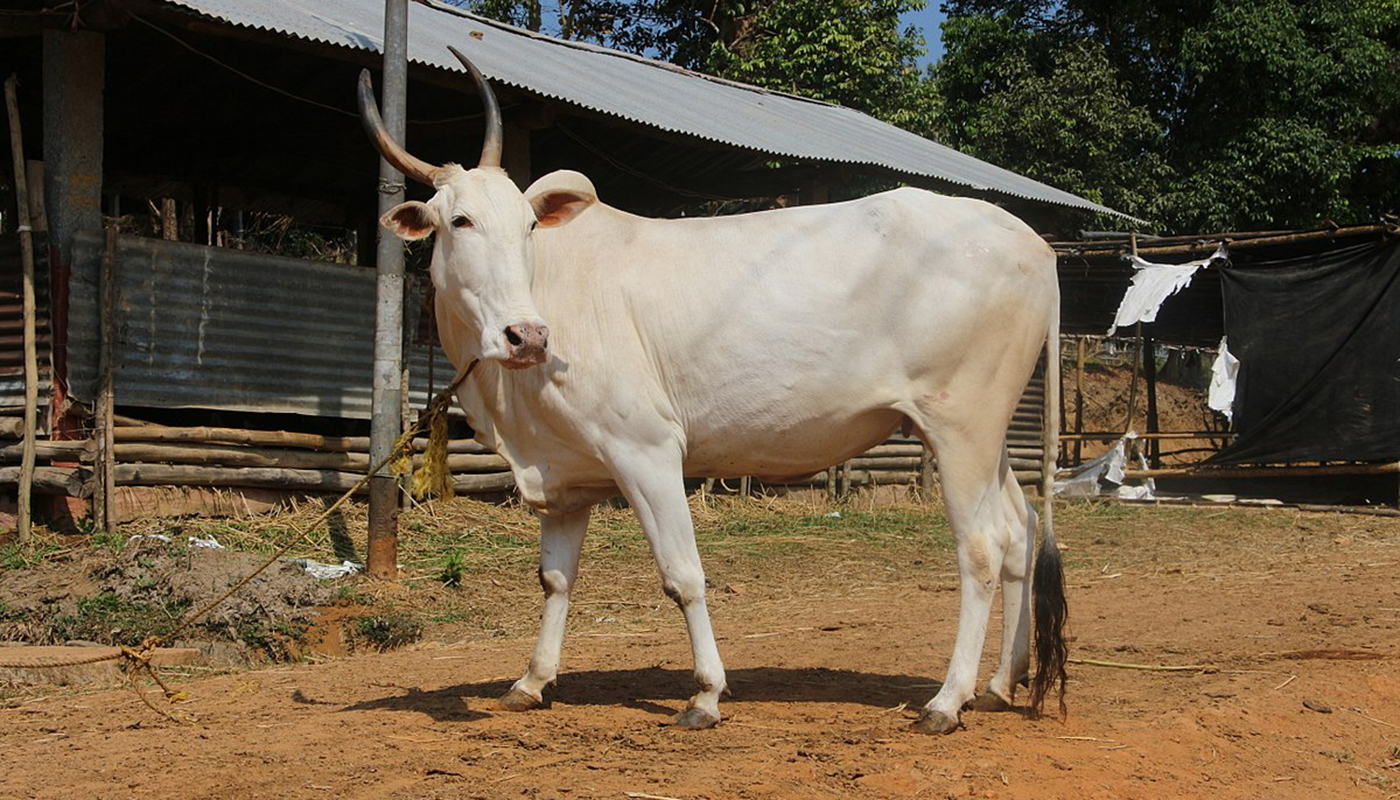 Hallikar Cattle Breed – Everything You Need to Know
Hallikar Cattle Breed – Everything You Need to Know Ankole-Watusi Cattle Breed – Everything You Need to Know
Ankole-Watusi Cattle Breed – Everything You Need to Know Nelore Cattle Breed – Everything You Need to Know
Nelore Cattle Breed – Everything You Need to Know Maine Anjou Cattle Breed – Everything You Need to Know
Maine Anjou Cattle Breed – Everything You Need to Know Sahiwal Cattle Breed – Everything You Need to Know
Sahiwal Cattle Breed – Everything You Need to Know